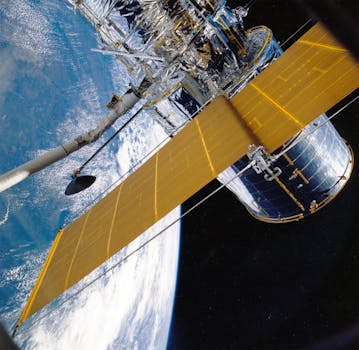Beyond Earth: How Recent Advances Are Shaping Satellite Telecommunications

Beyond Earth: How Recent Advances Are Shaping Satellite Telecommunications
Satellite telecommunications have come a long way since the launch of the first commercial communications satellite, Intelsat 1, in 1965. Today, satellite communications play a vital role in global communications, providing connectivity to remote and underserved areas, supporting international communications, and enabling a wide range of applications, from navigation and weather forecasting to telecommunications and broadcasting.
Recent advances in satellite telecommunications are transforming the way we communicate beyond Earth’s surface. With new technologies and innovations, satellite communications are becoming more efficient, reliable, and accessible. In this article, we will explore the recent advances in satellite telecommunications and their impact on the industry.
Advances in Satellite Technology
One of the significant advances in satellite telecommunications is the development of new satellite technologies, such as high-throughput satellites (HTS) and very high-throughput satellites (VHTS). These satellites offer higher bandwidth and faster data transfer rates, enabling the support of more users and applications. Additionally, the use of advanced materials and manufacturing techniques has led to the development of smaller, lighter, and more efficient satellites, reducing launch costs and increasing the lifespan of satellites.
Another significant advance is the development of satellite constellations, such as OneWeb and Starlink, which consist of hundreds or thousands of small satellites in low Earth orbit (LEO). These constellations provide global coverage, enabling the support of a wide range of applications, from broadband internet access to IoT connectivity. The use of satellite constellations also enables the provision of redundant and backup connectivity, improving the reliability and resilience of satellite communications.
Improvements in Ground Segment Technology
In addition to advances in satellite technology, there have been significant improvements in ground segment technology, including the development of more efficient and compact ground equipment, such as flat-panel antennas and phased arrays. These technologies enable the support of higher frequencies and faster data transfer rates, improving the overall performance and capacity of satellite communications.
The use of software-defined radios and modems has also improved the flexibility and efficiency of satellite communications, enabling the support of multiple protocols and waveforms. Additionally, the development of advanced signal processing techniques, such as beamforming and nulling, has improved the performance of satellite communications, enabling the mitigation of interference and the support of more users.
Impact on the Industry
The recent advances in satellite telecommunications are having a significant impact on the industry, enabling the support of new applications and services, such as satellite-based broadband internet access, IoT connectivity, and 5G backhaul. The use of satellite communications is also improving the reliability and resilience of critical infrastructure, such as emergency response and disaster recovery systems.
The development of new satellite technologies and innovations is also driving the growth of the satellite industry, creating new opportunities for satellite manufacturers, launch providers, and service providers. The use of satellite communications is also enabling the support of new business models, such as satellite-based cloud computing and data analytics.
Conclusion
In conclusion, recent advances in satellite telecommunications are transforming the way we communicate beyond Earth’s surface. With new technologies and innovations, satellite communications are becoming more efficient, reliable, and accessible. The impact of these advances will be felt across the industry, enabling the support of new applications and services, improving the reliability and resilience of critical infrastructure, and driving the growth of the satellite industry.





